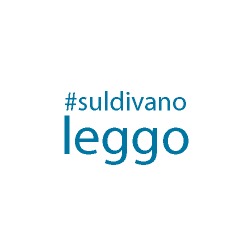“Nothing matters.
I have known that for a long time.
So nothing is worth doing.
I just realised that.”
These opening words constituting the first chapter actually share the style and the position of an epigraph, representing the key to interpret the whole book. The following pages will try to contradict this verdict, but from the very beginning we feel that all efforts will be vain and there will be no happy endings. In the first lines of the following chapter, the sentence “it all turned out the way it did” highlights this concept right away; here Agnes takes on the leading voice and narrates the story in which she and her classmates, at the time 13-year-old kids, were involved.
The first day of school, one of them, Pierre Anthon, stands up, gathers all his things in his schoolbag and leaves the classroom, announcing that nothing was worth doing, because nothing meant anything anyway. Mimicking Calvino’s Baron in the Trees, he climbs up a branch of a plum tree from where he bombards his schoolmates with fruit and verdicts. While leaving the class, he leaves the door ajar, a door that seems to smile at the other kids, tempting them like the door which marks the boundary between reality and fiction in The Truman Show. The kids know that Pierre Anthon is telling the truth, but this truth is scary, therefore they commit themselves to proving him wrong and persuading him to get down the tree. After putting into action the primitive idea of throwing stones at him, the group sets up and decides to create a heap on top of which everyone should put something important, their own “meaning”. Placed in an abandoned sawmill, the heap takes shape, at first enriched by beloved or emblematic objects, such as books, a fishing rod, a pair of shoes, a journal, a prayer mat… “harmless” sacrifices after all. But this is just the beginning: in a violent and macabre escalation, what was a game starts a snowball effect of revenge. Therefore, among other things, to the heap are added the exhumed coffin with the body of a girl’s little brother, the proof of the lost virginity of another girl, the head of a dog, decapitated for the occasion, and a boy’s index finger. Before Pierre Anthon has the chance to even see it, the heap draws the attention of the police, the press and one of the most important museums in the world, that offers to buy it. In the end, the “meaning” is sold, and therefore denied. Pierre Anthon does not fail to point it out while everything, as he had foreseen, gets back to normal and the interest for the town and the kids’ efforts dies out. Little by little, the kids lose their minds, or better said, they definitely lose their minds.
What had started as a simple children play turns into a tragedy that shocks us not only for the explosion of physical violence but also for the coldness of the protagonists as they pursue their purpose. The leading voice narrates all the horror in the events, exposing a minimal amount of emotions, except for the fear and the disgust occasionally evoked. From time to time brief instants of moral hesitation leak through, but they quickly disappear, overcome by the rules established by the group. We experience escalating distress through the reading and we almost feel in our bodies the atrocities committed and suffered by the protagonists. The style is fluent and harsh, the words are simple and blunt. Agnes recounts the horror with the same tone she would use for a school trip. Such an amount of inhumanity coming from small kids has condemned the book to harsh critics and censorship across Europe. Yet, we all remember the psychological (and sometimes even physical) oppression we have been subjected to – or we have caused – precisely in those schools that we would like to see as the realm of innocence. Children are not naturally innocent, we would rather say that they are instinctive, that they harm naively, being ingenuously prone to overcoming their peers. Janne Teller’s work throws us into distress because, above all, it blurs the portrait of childhood that we all know and love, in which we strongly want to believe, just like the main characters of this story want to believe in the meaning of life, in the possibility to become something/someone. This identification of the “thing” with the person, reaffirmed so many times throughout the book, is crucial. Things, actually, give us the first illusion of a meaning, like the many objects added to the pile demonstrate: a reification of the existence that anticipates the commercialization of the meaning when the museum enters the scene. What the objects stand for – the religion represented by the prayer mat and the Christ, the loved ones embodied by the hamster and the dead little brother, the homeland symbolized by the flag, the arts epitomised by the cut off finger of the guitarist, Sofie’s innocence reduced to a blood stain on a handkerchief – is swallowed and neutralized by money. Nevertheless, in the end the kids erase their own path, and lose the money. They have understood that Pierre Anthon is right and react with a last terrible act of revenge. The epilogue of this cruel coming of age story, scattered with philosophical questions, marks indeed the arrival into the world of those adults – teachers, parents – who had been absent during the whole course of events, those adults one cannot rely on because, as Sofie says, “none of you has taught us any meaning”. Growing up, the kids will wipe away the concern instilled by Pierre Anthon, his nihilism and his hermit choice. And – here is another recurring theme – they will conform to the endless lie that life is.
